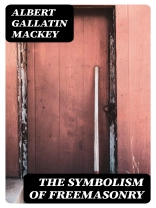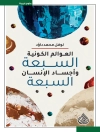In ‘The Symbolism of Freemasonry, ‘ Albert Gallatin Mackey delves into the intricate and nuanced world of Masonic symbolism, exploring the rich tapestry of allegories and metaphors that shape the foundational tenets of Freemasonry. Mackey employs a scholarly yet accessible literary style, merging historical analysis with philosophical inquiry, to elucidate the significance of symbols such as the square and compasses, the all-seeing eye, and various architectural motifs. Situated within the broader context of 19th-century Freemasonry, the book serves as both a spiritual guide and a critical exposition, demonstrating how symbolism functions as a language of moral and ethical instruction among Masons. Albert Gallatin Mackey, a prominent 19th-century Mason and historian, brought his extensive knowledge of the fraternity’s rites and philosophies into this seminal work. His deep involvement in Masonic organizations and commitment to education illuminated his understanding of its complex symbolism. Mackey’s background as a physician and a journalist empowered him to approach the subject with both precision and clarity, making complex ideas more approachable for the inquisitive reader. ‘The Symbolism of Freemasonry’ is a must-read for anyone interested in the esoteric aspects of Freemasonry or the broader implications of symbolism in moral philosophy. Mackey’s work acts as a vital resource for scholars, practitioners, and enthusiasts alike, inviting readers to unlock the deeper meanings behind Masonic traditions and their relevance in contemporary society.
Tentang Penulis
Albert Gallatin Mackey (1807–1881), an eminent American medical doctor and author, is renowned for his invaluable contributions to the field of Freemasonry. Born in Charleston, South Carolina, Mackey showed an early interest in literature and scholastic endeavors. Despite his medical degree from the University of Pennsylvania, his enduring passion was freemasonry, which became the core subject of his prolific writings. Mackey’s scholarly approach to the esoteric aspects of Freemasonry established him as a significant figure in Masonic literature. His seminal work, ‘The Symbolism of Freemasonry: Illustrating and Explaining Its Science and Philosophy, Its Legends, Myths, and Symbols’ (1869), remains a classic in the genre. The book provides an in-depth exploration of the allegorical and symbolic elements of Freemasonry, reflecting Mackey’s philosophy that Freemasonry is a system of morality veiled in allegory and illustrated by symbols. His meticulous analysis and interpretations have greatly influenced modern Freemasonic thought and study. Mackey was also known for his rational and historical approach to Masonic traditions, as seen in his other notable works such as the ‘Mackey’s Revised Encyclopedia of Freemasonry, ‘ which continues to serve as an essential reference for Masonic scholars. His articulation of Masonic principles and his intellectual rigor have cemented his reputation as one of the fraternity’s most respected and authoritative voices.












